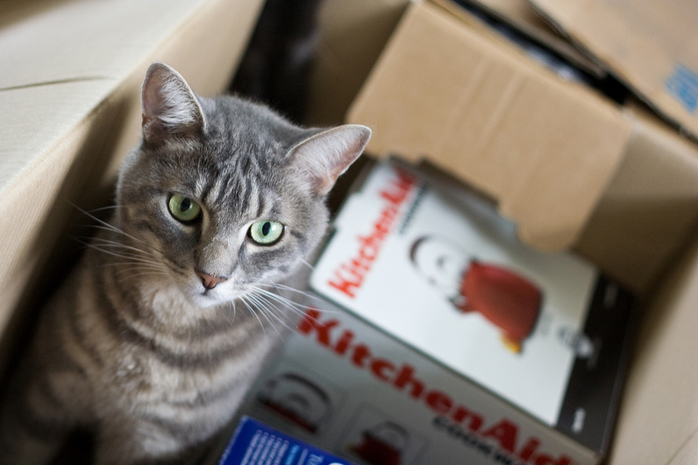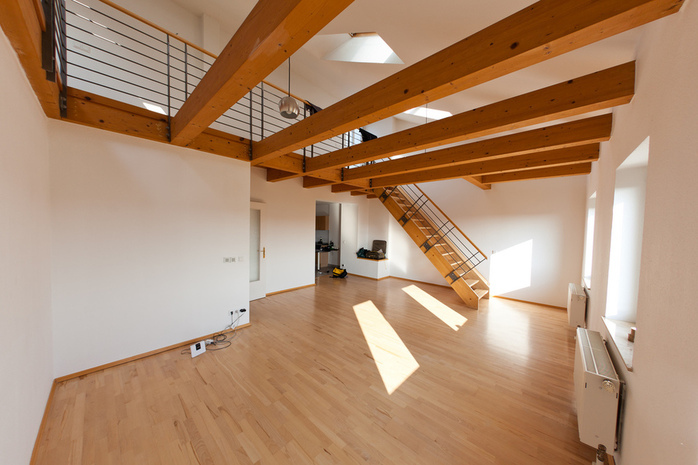Clean your Kitchen fast!
1. Clear the counters. Cooking is your kitchen’s top priority right now. So stash mail, school schedules, and that rarely used juicer elsewhere. (Just don’t lose any bills in the process.) Then pull out the trash can and toss bags or boxes of unwanted edibles sitting out. Squirt cleaner (Mr. Clean Multi-Surfaces has done well in GHRI tests) around what’s left on the counter — canisters, the toaster. Wipe and let dry.
2. Purge the fridge. Pull the trash can over and dump lingering leftovers, spoiled food, and open bottles of condiments, like grill marinade from last summer. You could remove all the glass shelves and bins and wash them — or give them a fast once-over with a wet cloth or sponge. Don’t forget fingerprints and splatters on the door front and handle. A fresh box of baking soda absorbs odors, too.
3. Skip the oven. If it’s dinner party day already and you haven’t run the self-cleaning cycle, now is not the time to commit to this hours-long task). Spot-clean dead-giveaway grime — stovetop spills, grease on the door handle or inside the glass door — with your sponge and a dash of baking soda (it’ll rinse off easier than a sudsy cleaner, FYI).
4. Think sink. Stop pretending you’re going to rinse those dishes piling up on the counter, and load them in the dishwasher (or if not, at least stack them neatly in the sink). Run some water over drippy detergent bottles, then stick those, pot scrubbers, and rubber gloves under the sink. When all has been relocated, run a sponge around the bowl of the basin and over the faucet if you’ve splattered water in your speediness.
5. Mop stop. Before collapsing onto the sofa, use a sweeper with disposable cloths, like Swiffer, to pick up crumbs, dust, and hair from the floor. Pro tip: Keep a damp paper towel in one hand to zap stains so you don’t have to stop as you go. Throw the used Swiffer sheet and towel in your trash bin. And look — there’s the company.
Clean your Windows:
Fastest Fixes
Give dirt the brush-off. We know — going at the glass with the cleaner is the most satisfying part. But before you squeeze that trigger, pull back the blinds or curtains, open the window, and inspect its sill, frame, and tracks for obvious crud and cobwebs. Sweep out debris using the small-handled brush that comes with your dustpan. (Skip this step, and you risk a mess later, since the loose dirt can stick to your wiping towel and smear the glass.) Also handy: a cloth-wrapped screwdriver for flicking out dead bugs or hard-to-reach gunk.
1. De-grime the screens. If you leave yours in year-round, give them a once-over now — otherwise, all that dried-on dirt may blow into your house the first time you open the windows for ventilation. The good news: You don’t need to take down the screens and hose them off. Just run your vacuum with its dusting-brush attachment over the side that faces in. (Side to side, top to bottom is the speediest method.)
2. Make the glass gleam. For windows that tilt in, washing both sides is a cinch. Spray your cleaner on the inside of the glass until it’s heavily misted but not drippy. Then, with a clean lint-free cloth, wipe horizontally until dry. Tilt the window the other way; repeat on the outer panes, but this time wipe vertically (cleaning in opposite directions makes streaks obvious and easier to zap). For double-hung windows that don’t fold in, slide the bottom pane up about eight inches — so you can reach out and up. Clean what you can; then slide down the top panel to get it from above. Windows crank out or don’t open at all? Clean the insides, then rinse the outsides with a hose.
Get those Light Fixtures Sparkling!
Fastest Fixes
1. Wipe out webs. Dust and cobwebs seem to disappear when it's dark, so to nab the pesky problems, turn the lights on before you start cleaning. Either use a long-handled duster or make one: Wrap a yardstick or broom handle at the end with a dampened dusting cloth or old sock; secure with a rubber band. Starting with your hanging fixtures, run your duster around each light's ceiling attachment and along the chain. Next, carefully work the duster through the fixture to catch any webs dangling inside. For less-intricate globe overhead lights, a gentle whisk around the glass cover should nab any dust or debris.
2. Get crystals (and bulbs) clear.Taking down and hand-washing chandelier crystals one by one is the definition of chore. Instead, give yours this speedy, two-fisted approach. For the low-hanging dining room fixture, arm yourself with a microfiber cloth in one hand and a premoistened glass-cleaning wipe in the other (or make your own by spritzing a paper towel with glass cleaner). Turn the lights off, since liquids plus electricity equals a bad idea, then wipe and dry each crystal from the top of the fixture down, so you won't smudge already-clean crystals by reaching over them. To avoid damaging the cord and connections, don't spin the chandelier; instead, move yourself around it. If possible, push the table out of the way or use a step stool for better access. Next, the bulbs: Using your microfiber cloth, wipe each one, giving a gentle twist to be sure it's secure in its socket. When using your step stool, you'll need to reposition it a few times to work your way around — or, if you don't see any burned-out bulbs to replace, just skip the high-wire act entirely and do your best from the ground with your long-reach duster.
3. Fix a shady situation. For pleated shades on floor or table lamps, grab a clean paintbrush to quickly whisk dust from inside each pleat, working from top to bottom all the way around the shade. Run the same brush over the bulb and the wire that holds the shade in place. Nonpleated shades don't gather as much mess, so a once-over with a duster, microfiber cloth, or even a lint roller should do it. Use a duster or microfiber cloth to spiff up the lamp's base.
Banish old Carpet Stains:
Fastest Fixes
1. De-grit dirty doormats. Interior doormats stop dirt from being tracked inside, but only if they're kept clean. If the care tag allows, you can rid mats of loose soil by tossing them into the washer and dryer — short, gentle cycle on warm; tumble-dry low. Otherwise, for best, non-washing results, use a vacuum. Quickly go over the top of each mat, flip it over, and vacuum the back, even if it's rubber or plastic — this loosens any embedded dirt. Then, lift the mat, and vacuum up the grit that came out. (Our bet: It's no small amount.) If you're truly time crunched, however, simply take the mats outside for a good shaking, beating with your hand or a stick a few times on each side.
2. Clear the path. If your carpet has a gray, matted trail from your couch to your kitchen or any other well-worn route, yep, you've got a traffic aisle. Since there are still a few more months of winter to go, save the heavy cleaning (with a rental machine or by a professional) for spring. Instead, hit the dingy path with a powdered carpet cleaner, like GHRI favorite Resolve High Traffic Granules Large Area Carpet Cleaner ($6.25). Sprinkle on the powder, then work it in with the included brush. Let it sit for about 30 minutes, and then vacuum. In GHRI tests, dirty rugs were noticeably brighter.
3. Get the spots out. During the holidays, everything from red wine to gravy to good old mud can find its way onto your rugs. Here's the method our GHRI experts have found works on most dried-in blotches: Take two empty spray bottles, and fill one with cold water. In the other, mix 1/4 teaspoon plain dishwashing liquid and 1 cup warm water. Spray the detergent solution onto an absorbent cloth (not the carpet — you don't want to wet it too much), and dab, don't rub, it on the spot. As the stain dissolves, blot with a clean section of cloth. Keep applying and blotting this way until the stain is gone. Spray another cloth with the cold water, and use it to rinse the detergent solution from the carpet; blot again with a dry cloth. Then, pile on a stack of white paper towels, and place a heavy pot on top; leave overnight to soak up any residual staining deep in the carpet. In the A.M., remove the pot and toss the paper towels; fluff the fibers with your fingers and allow to air-dry.
Speed clean your washroom!
Probably the busiest spot in your house, the bathroom is also the place almost every guest visits. So if you start sweating whenever someone asks, "Do you mind if I freshen up/use the toilet/secretly judge your cleaning skills?" just relax. These tricks will get the room looking freshly scrubbed in 15 minutes or less.
1. In the bag. To start, hang a plastic sack on the doorknob for tossing the cleaning cloths you're about to use and emptying the wastebasket — the easiest insta-tidy trick.
2. First, flush. Next, grab some bleach. Pour a cup into the bowl; brush around the sides and under the rim. Then move on to the next task for five minutes.
3. Quick shine. While the bleach is working, fill a spray bottle with equal parts water and white vinegar (or better yet, keep a bottle stored nearby for just this occasion). Spritz onto paper towels or a microfiber cloth, and zero in on those telltale soap drips and toothpaste spatters on faucets, mirrors, countertops, and in the sink — a definite dirty-bathroom giveaway. Optional (and only if you really care what your visitors think): Give spotty shower doors the same spray treatment.
4. Wipe control. Flip over one of those same vinegar wipes and run it across the back of your dusty toilet tank, then over, under, and around the seat. Flush the bleach that's been sitting in the bowl, toss the wipe into your doorknob bag, and move on.
5. Towel trick. Instead of scooping up all the used bath towels, just put out fresh hand towels — those are the only ones short-term guests use anyway. Leave the others on the bar; just straighten them. If you have linen spray, mist the towels. If you don't, a light body spray or perfume will do the job.
6. Exit strategy. Now it's time for the floor. Shake out your rug or bath mat to fluff it up so it looks recently vacuumed. Next, with a dampened paper towel, swoosh the corners of the room, where most of the hair and dust collects. And don't forget to take the plastic bag with you when you leave!
/about/GettyImages-608163079-57a0eb0d3df78c3276e6076c.jpg)

/about/buyahome-581cdf295f9b581c0b65d3f6.png)
















![diy vs interior designer diy vs interior designer DIY Vs. Hiring an Expert When It Comes to Redecorating Your Home [Infographic]](http://cdn.freshome.com/wp-content/uploads/2013/10/diy-vs-interior-designer.jpg)
![redecorating infographic redecorating infographic DIY Vs. Hiring an Expert When It Comes to Redecorating Your Home [Infographic]](https://www.instylemodern.com/v/vspfiles/assets/images/redecorating-infographic.jpg)

























